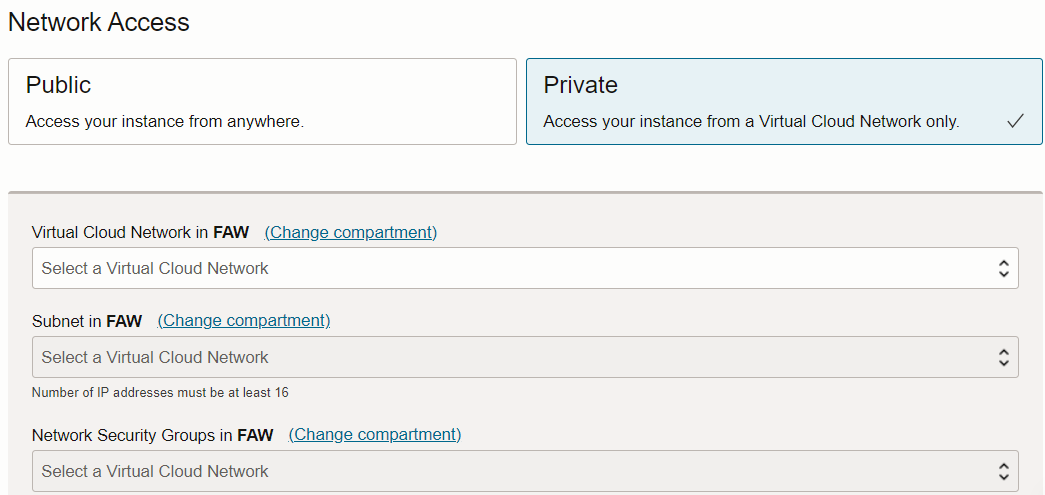Deploy Oracle Fusion Analytics Warehouse with a Private Endpoint
When you set up an Oracle Fusion Analytics Warehouse instance, you have the option to restrict access through a private endpoint.
A private endpoint is accessible through private network traffic and direct public internet access is prohibited. When you deploy Oracle Fusion Analytics Warehouse with a private endpoint, Oracle Autonomous Data Warehouse and Oracle Analytics Cloud use private endpoints in your private subnet. You can provide access to Oracle Fusion Analytics Warehouse from an Oracle Cloud Infrastructure VCN that's deployed in any regions, tenancies, and on-premises too.
About Private Endpoints
Private endpoint refers to a network setup for your Oracle Fusion Analytics Warehouse instance where all network traffic moves through a private endpoint within a virtual cloud network in your tenancy.
Using a private endpoint for Oracle Fusion Analytics Warehouse meets the organization's security requirement that restricts the use of public endpoints. Private endpoint configuration doesn't use public subnets and allows you to keep all traffic to and from your Oracle Fusion Analytics Warehouse instance away from the public internet.
See About Private Endpoints in Private Access.
Prerequisites for a Private Endpoint
To provision an Oracle Fusion Analytics Warehouse instance with a private endpoint, you must have the following resources already created:
Create an Oracle Fusion Analytics Warehouse Private Instance
After your Oracle Fusion Analytics Warehouse private access service has been provisioned by Oracle, create an Oracle Fusion Analytics Warehouse private instance.
You must ensure that the prerequisites are in place. See Prerequisites for a Private Endpoint.
Navigate to the Details page for the new service to access the Oracle Fusion Analytics Warehouse URL and associated Oracle Autonomous Data Warehouse. From here, you can also view or modify details such as the password for your Oracle Fusion Cloud Applications instance and the administrator password for the Oracle Autonomous Data Warehouse. You can also delete the service instance that's no longer required.
If you had set up provisioning of Oracle Fusion Analytics Warehouse with single sign-on, then your service is associated with the federated Oracle Identity Cloud Service instance. If you hadn’t set up single sign-on for Oracle Fusion Analytics Warehouse, then your service is associated with the default Oracle Identity Cloud Service instance that you received with your Oracle Cloud account.
